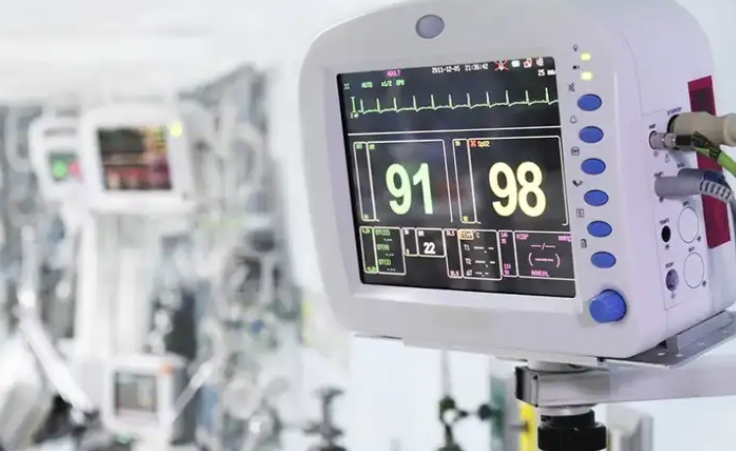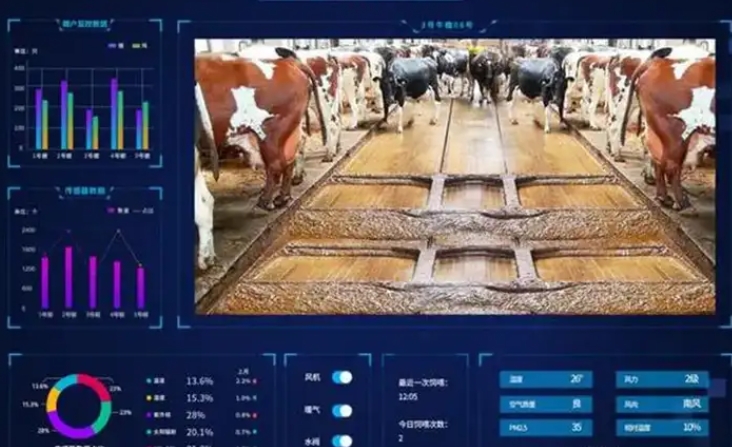The difference between SCM and RTOS in embedded system is explained in detail
2024-04-12 14:43:34 102
In the field of embedded system development, RTOS and microcontroller are two indispensable core concepts. Although there is a close relationship between them, in practical applications, there are significant differences in functional positioning, design principles and application scenarios. Follow the analysis with Infinitech.
1. Basic definition
Single chip Microcomputer (MCU)
MCU, also known as @microcontroller, is a microcomputer system that integrates the basic components of a computer (such as CPU, memory, input/output interface, etc.) on a chip. It is characterized by small size, low power consumption and strong control function, and is suitable for real-time control tasks of various embedded systems. With its high integration and flexibility, SCM is widely used in household appliances, industrial automation, automotive electronics, medical equipment and other fields.

RTOS (Real-Time Operating System)
RTOS is an operating system designed for embedded systems with high real-time requirements. It has the functions of task scheduling, memory management, interrupt processing, synchronization and mutual exclusion mechanism, etc., which can ensure that each task in the system can be responded within a certain time. Designed to provide a predictable, stable, and efficient operating environment, RTOS are particularly suitable for applications that require strict time constraints, such as aerospace, industrial control, robotics, and more.
RTOS can be divided into hard real-time, fixed real-time, and soft real-time according to task timeliness
1. Hard real-time
In the hard real-time operating system, the task has high real-time requirement, that is, the given task must be executed and completed within the planned time range.
Examples: medical intensive care systems, aviation systems, etc.

2, fixed real-time
With this type of RTOS, tasks also need to be completed within the scheduled time. The time out will not cause a major impact, but it will affect the experience of the product.
Example: Various types of multimedia applications.

3. Soft real-time
In a soft real-time RTOS, a task has an expiration time, but a small time delay is acceptable. This RTOS has the flexibility to define deadlines based on task priority.
Examples: online trading system, livestock and poultry quotation system.

The key difference between hard real time and soft real time is that soft real time can only provide statistical real time. For example, some applications require that the system can ensure that an action is completed within the specified time 95% of the time, and not necessarily 100% : when operating a DVD player, the normal playback ratio of 98% can basically meet the needs of users. However, for the application system of launching satellites and controlling nuclear reactors, the real-time performance of these systems must reach 100%, and accidents are absolutely not allowed.
The hard real-time system has a rigid and unchangeable time limit, which does not allow any error beyond the time limit. The timeout error will cause damage or even cause the system to fail, or cause the system to fail to achieve the expected goal. The time limit of soft real-time system is relatively flexible and can tolerate occasional time-out error.
2. Differences in functional positioning, design principles and application scenarios
2.1 Function Positioning
Single-chip microcomputer: As a hardware platform, single-chip microcomputer is mainly responsible for executing pre-programmed instruction sets and completing specific control tasks. It directly interacts with sensors, actuators and other hardware to achieve data acquisition, signal processing, logic judgment and output control functions. The program of single chip microcomputer is usually written by cyclic scanning or interrupt driving to meet the real-time requirements.
RTOS: As a software architecture, an RTOS provides a runtime environment and a set of services for an application. Through task scheduling, message passing, resource allocation and other mechanisms, it makes multiple concurrent tasks run orderly and efficiently under the condition of sharing hardware resources. RTOS are not directly involved in specific control tasks, but rather provide management and coordination services for these tasks, improving the overall performance and reliability of the system.
2.2 Design Principle
Single-chip microcomputer: The design of the single-chip microcomputer follows the principle of hardware priority, its architecture is simple and clear, usually including CPU, RAM, ROM, I/O port, timer/counter and other basic components. The program runs based on a single thread model, and realizes task scheduling by means of loop, interrupt and so on. To develop application program on MCU, it is necessary to have a deep understanding of the underlying hardware and directly operate the register to program.
RTOS: The design of RTOS focuses on complexity management at the software level. It introduced advanced scheduling strategies such as multitasking, time slice rotation, priority preemption, and abstract data types such as memory pools, queues, and semaphores, allowing programmers to focus on business logic without paying too much attention to hardware details. RTOS provide a more advanced and abstract programming model for applications by providing an API interface.
2.3 Application Scenarios
Single-chip microcomputer: Single-chip microcomputer is suitable for applications with relatively simple tasks, moderate real-time requirements, cost sensitivity and strict restrictions on volume and weight. Such as the control panel of household appliances, simple industrial equipment controllers, small electronic toys and so on.

RTOS: RTOS are applicable to scenarios where tasks are complex, real-time requirements are strict, and system stability is critical. For example, aerospace flight control systems, real-time monitoring systems for industrial automated production lines, accurate measurement and control of medical equipment, motion planning and control of high-end robot systems, etc.
3. Complementary advantages in embedded systems
Although there are significant differences between RTOS and microcontroller in function positioning, design principle and application scenarios, they are not mutually exclusive, but complement each other and jointly promote the development of embedded technology. In many complex embedded systems, SCM is used as the hardware base, and RTOS is installed to improve the system performance and reliability. The advantages of this deep integration model are:
3.1 Improving System Performance
RTOS can effectively utilize the computing resources of single chip computer through parallel processing of multiple tasks, and avoid the overall performance degradation caused by single task blocking. At the same time, its efficient scheduling algorithm and time management mechanism ensure the real-time response of key tasks and improve the overall performance of the system.
3.2 Optimize Resource Management
The services provided by RTOS, such as memory management and device driver, simplify the use and management of MCU resources, reduce the difficulty of programming, and reduce potential resource conflicts and errors. In addition, RTOS supports dynamic memory allocation, which helps to implement more complex applications with limited hardware resources.
3.3 Improve system stability and reliability
The functions of RTOS, such as exception handling, fault recovery, and inter-task communication, enhance the fault tolerance and self-healing capability of the system. Its strict timing control and priority management ensure the stable operation of the system in complex environments, especially for applications with high security requirements.
Summary: Single-chip microcomputer with its high integration, low cost, low power characteristics, to meet a large number of simple real-time control needs; RTOS provides powerful support for complex and real-time applications through advanced task scheduling and resource management mechanisms. Understanding and mastering the difference between the two is not only helpful for engineers to make reasonable technology selection in actual projects, but also conducive to promoting the innovation and development of embedded technology.













